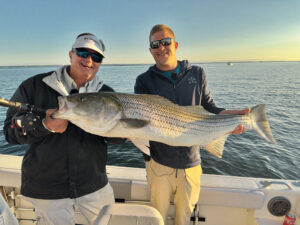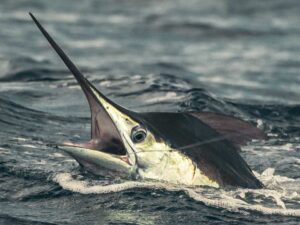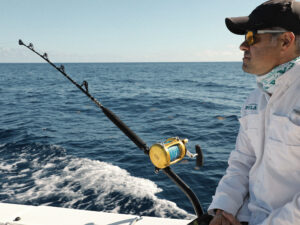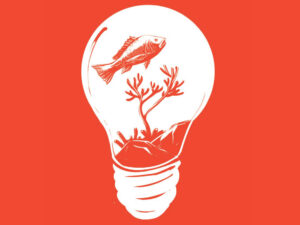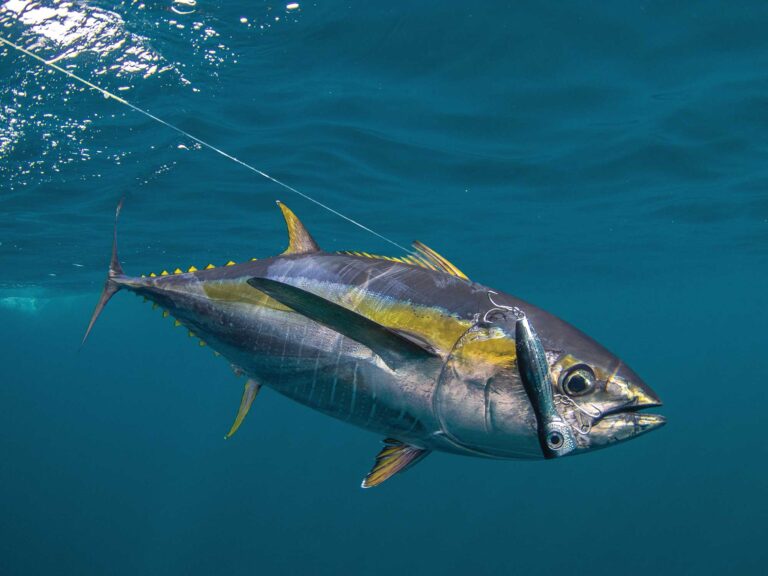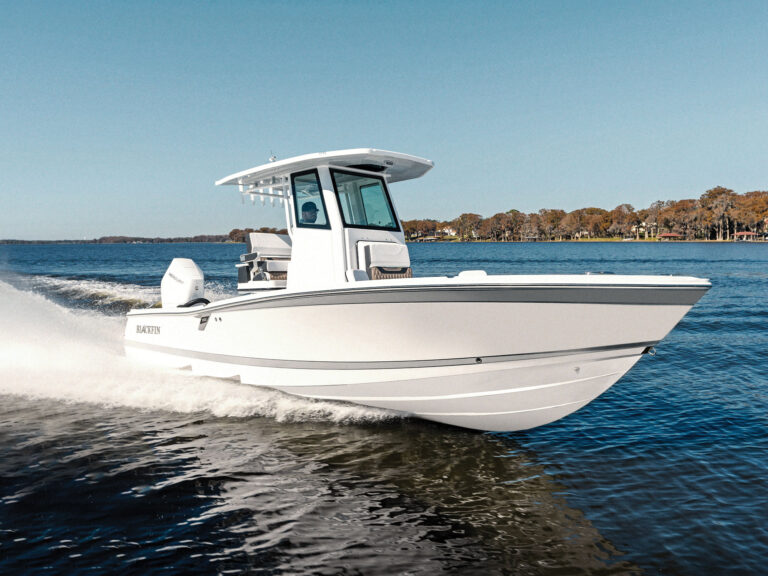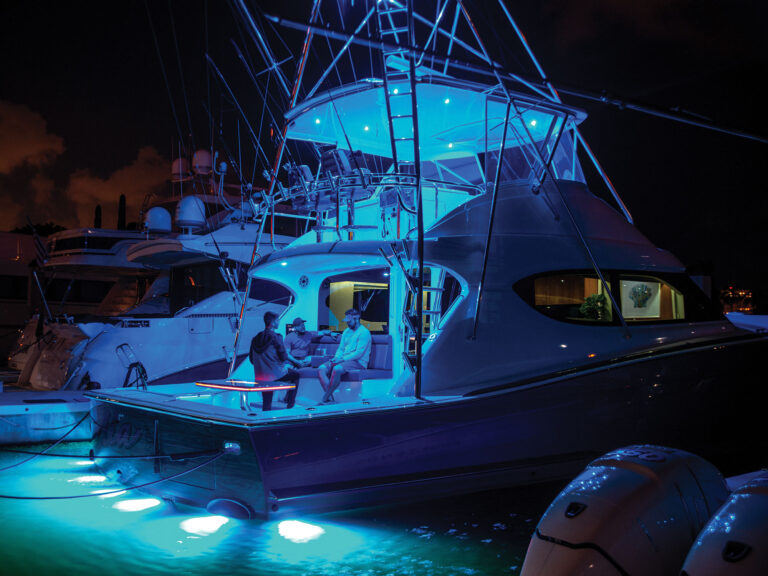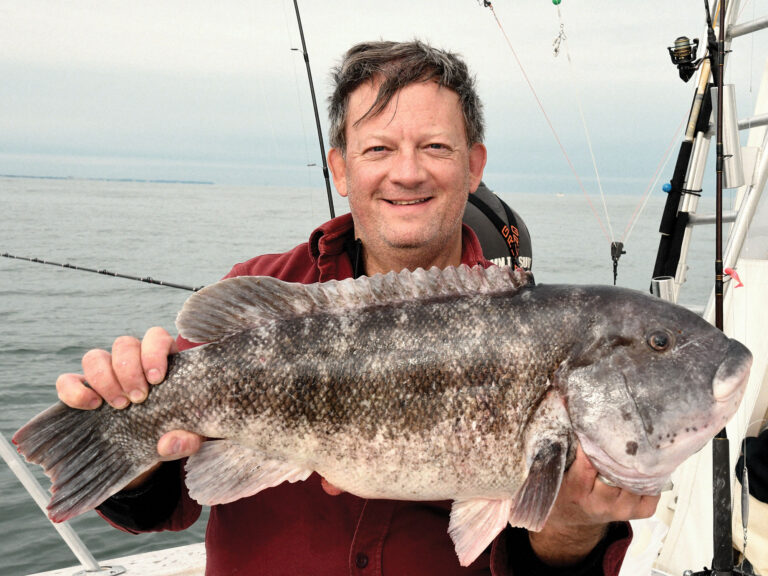Mangrove snapper are among the most abundant and accessible saltwater game fish in Florida. You can catch them close to shore, they consume a variety of baits, and they are great to eat, too.
Mangrove snapper are a great way to introduce kids to fishing and the light tackle action they provide keep veteran anglers coming back for more. No matter where you sit on the fishing spectrum, everyone likes to catch more mangrove snapper. Here’s how to do it.
Where to Find Mangrove Snapper
One of the great things about mangrove snapper is that you can find them in so many places. For the purposes of tactics, you can divide the fishing into two categories: open water and around shore. Here is a breakdown of how mangrove snapper tactics compare with ways to target other varieties of Florida snapper.
Open water mangrove snapper habitats include patch reefs, rock piles, bridge pylons, shallow water wrecks and others. In fact, in many places around Florida you can find mangrove snapper around most any shallow water structure you come across. Common shore-associated mangrove snapper habitats include mangrove roots, around islands, in channels on the flats, around jetties, docks and sea walls.
Generally speaking, the fundamentals of catching mangrove snapper are pretty similar across habitat type. You’ll want to chum the fish up and present bait with a leader that is light enough not to be noticed. Big snapper in shallow water—especially in the presence of structure—do present the challenge of being able to keep them from getting you tangled up.
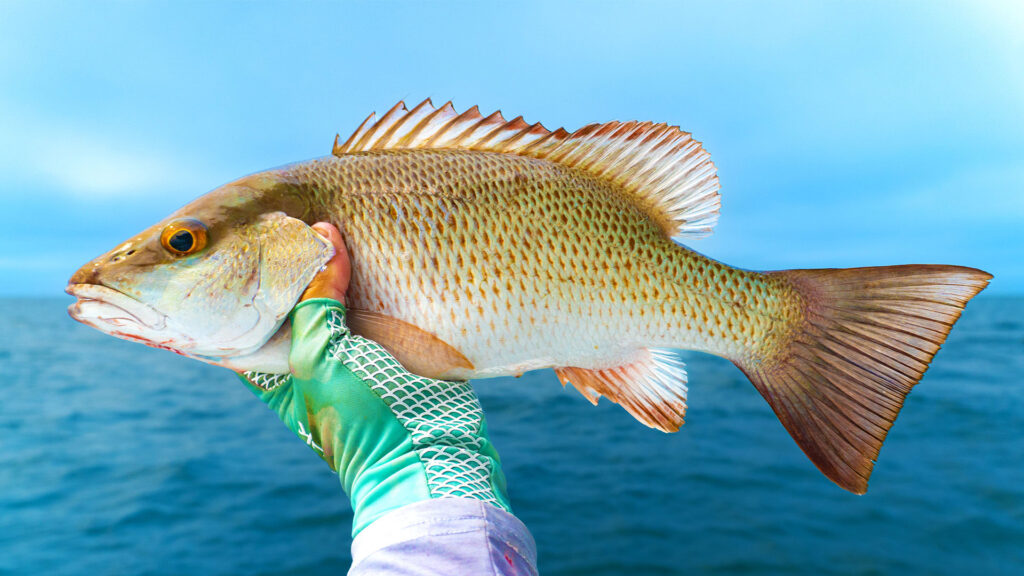
Chumming for Mangrove Snapper
Chumming is a very popular method of targeting snapper and other varieties of reef fish. There are several ways to chum for mangrove snapper—you can adapt your approach to where you find the fish. This article provides some tips for chumming techniques for a variety of fishing applications.
The first two approaches work best when fishing for mangrove snapper in open water. These two approaches may be combined and use the same rigs and equipment.
Frozen Chum Block and Bag
The frozen, store-bought chum block is perhaps the most commonly used approach. It is also the easiest. You just put a frozen chum block into a chum bag, hang it over the side of the boat and let the thawing pieces of chum drift to the structure you’re targeting.
Position your boat up current of the structure. As the block thaws, bits of chum will drift down to the snapper. You can expedite the process and knock more pieces loose by shaking the bag. As the chum begins to disperse, you should start to see mangrove snapper start coming off of the bottom and into the chum trail. Here are some more tips for how to effectively use chum to catch more fish.
Fresh Chum
The second way to chum involves catching lots of herring or pilchards in your cast net. Keep plenty of them alive in the live well to use for bait, but for the purposes of this kind of chumming, you’ll need plenty of dead baits.
Chop the fresh dead pilchards into thirds or fourths. Position your boat up current of the structure you’re targeting. You’ll want to anchor to make sure that your boat stays in the same position.
Toss a handful of chunks into the water every 20 seconds to two minutes (you might start out with more rapid tosses and then taper off as the fish start to respond to the chunks). Allow the chunks to drift back onto your spot.
If the snapper are there, they should start responding to the chunks within a few handfuls. Pay attention to the size of the fish. You’ll want to make sure there are keepers on the spot before you use all of your chunks. This is especially important in places that get lots of fishing pressure.
If only small fish respond to the chunks, you’ll want to move. You may need to try a spot or two before you find the right place.
You can combine the fresh chunking approach with the frozen chum block. This will stretch your supply of chum.
Fishing for Mangrove Snapper in Open Water
No matter what type of chum you deploy, you’ll likely want to allow the chum to disperse and for the fish to respond for a few minutes before putting a baited hook in the water. This allows the fish to come in numbers before you risk spooking them.
Depending on where in Florida you’re fishing, chumming up a ball of mangrove snapper might also bring any number of other creatures. You’re always well-served to have a bigger rod rigged and ready in case a cobia or other tasty surprise shows up.
Bait for Mangrove Snapper
If you’re chumming with chunks, you’ll want to use the same chunks for bait. Bury your hook into a chunk (hide as much as you can while leaving the point and barb exposed).
When you toss in a handful of freebies, cast your hooked chunk into the same group and let it drift back naturally with the unhooked chunks. When the snapper are fired up and responding to the chunks, this approach can result in rapid hookups.
If you don’t have fresh dead or live bait, don’t worry. Mangrove snapper will eat all kinds of bait. You can use squid, shrimp (though this is easily stolen by small snapper and other fish that are in your chum), or chunks of cut bait.
Rigs for Mangrove Snapper
Light spinning gear is ideal for mangrove snapper. The AL13 Spinning Reel is a great all around option. Spooled with 10-pound braid and matched with the medium light 7’4” Fate S+ Saltwater Spinning Rod and the result is an outfit that’s ready for all manner of inshore applications.
When you’re mangrove snapper fishing, you’ll want to use fluorocarbon leader. 20 pound is a good bet. It combines abrasion resistance (you’ll need this to get big snapper out of structure) and decreased visibility (you’ll need this too, especially in clear, shallow water).
The clearer the water and the more fishing pressure the area you’re in experiences, the longer the leader you’ll want to use. As a general rule, you might want a leader of between about 3 and 6 feet.
As for hooks, you’ll want light wire and sharpness. Some prefer circle hooks, others j hooks, either way 1/0 is a good size. Light wire is important because you want your baits to drift naturally without interference from a heavy hook. The light wire also makes it easier to disguise the hook in chunks so that line-shy snapper don’t see it.
If you’re fishing deeper spots, you may want to deploy jig heads. These will allow you to get bait down to larger fish that sometimes hold deeper. The exact weight of the jig head you’ll deploy (1/16, 1/8, etc.) will depend on the wind, current and depth of the area you’re fishing. You’ll just tip the jig head with squid, shrimp or even a whole dead or live pilchard. You can also use a soft plastic on a jighead.
Get the mangrove snapper rig here
Catching Mangrove Snapper Near Land
One of the most effective ways to target mangrove snapper that are holding near shore is to live chum. This approach works best if you are proficient with a big cast net.
To live chum, you’ll need to load your live well with pilchards. The small ones—in the 2.5-3-inch range—work best. This approach works well around mangrove islands, places where channels empty into the flats, and even docks.
You’ll want to stake your boat within easy casting distance of the structure that you’re targeting. Live chumming works the same as other forms of chumming, you just use live bait instead of frozen grind or chunks of fresh dead bait.
Scoop 6 or 8 pilchards in your bait net and sling them near your spot. It works best if the baits are a bit debilitated, it works best. You can leave them out of them a squeeze before tossing them.
If your spot is good, after a scoop or two of freebies, you’ll see snapper boiling on the baits you tossed in. Now just take another pilchard, run your hook through the bridge of its nose and toss it into the action. Your rig will be the same—light wire hook and fluorocarbon leader. Since you’re in near structure, make sure you’re ready to put the brakes on any big mangrove snapper that you hook.
FAQ
What is the best bait for mangrove snappers?
Mangrove snapper eat a variety of baits. That said, it’s hard to beat a live or freshly dead pilchard.
What is the best time to catch mangrove snapper?
You can catch open water snapper on a varsity of tides. If the tide is ripping it may be hard to keep your chum going or your bait in place. If you’re fishing mangrove snapper that are holding on structure near land, high tide might be your best bet as there will be more water in the location.
Where is the best place to catch mangrove snapper?
You can find mangrove snapper around mangrove islands, docks and all kinds of structure. The best place to catch them depends on the style of fishing that you like. If drifting chunks to hungry schools is your idea of fun, chumming them on bridges or in open water structure is best. If you like casting live baits to larger fish, try live chumming around mangrove islands.
Is there a size limit on mangrove snapper in Florida?
The minimum size limit for mangrove snapper in Florida is 10 inches. The bag limit is five per person, per day or 10 in total per person on an overnight trip.
About the Author:
Elliott Stark is a fisherman, writer, and marine biologist. He publishes FishTravelEat.com and is the author of The Book on Travel Fishing.

